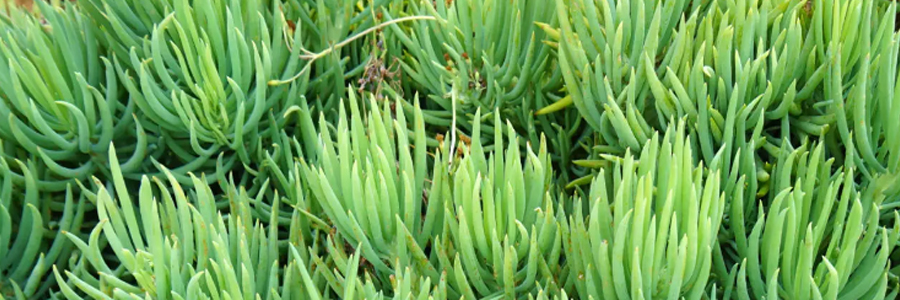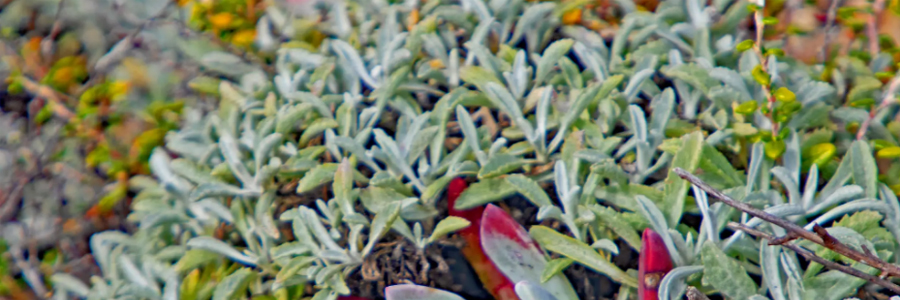Dudleya
Taxonomic Classification
The Dudleya genus belongs to the family Crassulaceae. It consists of approximately 48 species of succulent plants. The genus is named after William Russel Dudley, an American botanist. Native to western North America, particularly the coastal regions from British Columbia in Canada to Baja California in Mexico, Dudleya species have adapted to a variety of habitats, including coastal bluffs, rocky slopes, and desert areas.
Morphological Characteristics
1.Leaf Structure
Dudleya plants are characterized by their rosette – shaped growth habit. The leaves are thick, fleshy, and succulent, designed for water storage, which is crucial for their survival in arid and semi – arid environments. The leaf shapes can vary from long and narrow, as in Dudleya brittonii (Cabbage Dudleya), to more rounded and spatulate, such as in Dudleya pulverulenta (Chalk Dudleya). The leaves are often covered in a powdery or waxy substance, which gives them a pale, gray – green or blue – green color. This coating, known as farina, helps to protect the plant from excessive sunlight, reduce water loss, and reflects heat.
2.Stem and Growth Habit
The stems of Dudleya are generally short and may be either upright or slightly sprawling. Some species may produce offsets, which are small plantlets that emerge from the base of the mother plant. These offsets can be easily separated and propagated, contributing to the spread of the plant. As the plants grow, they may produce long, thin flower stalks that rise above the rosettes. The flower stalks can be simple or branched, depending on the species.
3.Flowering Characteristics
When Dudleya plants flower, they produce clusters of small, star – shaped flowers. The flowers are typically borne on long, erect or arching stalks that emerge from the center of the rosette. The petals of the flowers can be white, yellow, or in some cases, a combination of these colors. The flowers have a delicate appearance and are often arranged in a loose, branched inflorescence. The flowering period usually occurs in spring or early summer, but it can vary slightly depending on the species and the local climate.
Common Varieties
1.Dudleya brittonii
Also known as Cabbage Dudleya, Dudleya brittonii has large, thick, rounded leaves that form a tight, cabbage – like rosette. The leaves are covered in a thick layer of farina, giving them a pale, blue – green color. It is a relatively large – growing Dudleya, with rosettes that can reach up to 30 centimeters in diameter. It produces a tall, branched flower stalk with small, white flowers in spring.
2.Dudleya pulverulenta
Chalk Dudleya, Dudleya pulverulenta, has thick, spatulate leaves that are covered in a powdery coating, making them appear almost white. The rosettes are compact, and the plant has a low – growing habit. It produces a tall, erect flower stalk with small, yellow flowers in spring or early summer. It is a popular choice for rock gardens and succulent collections.
3.Dudleya lanceolata
This species has long, lance – shaped leaves that are arranged in a loose rosette. The leaves are green, but may develop a red or purple tinge at the edges when exposed to stress factors such as strong sunlight. Dudleya lanceolata produces a tall, branched flower stalk with small, white flowers. It is a relatively easy – to – care – for plant and is suitable for both indoor and outdoor cultivation in suitable climates.
4.Dudleya caespitosa
Dudleya caespitosa forms small, tight rosettes of thick, rounded leaves. The leaves are green and may have a slight powdery coating. It produces a short, erect flower stalk with small, yellow flowers. It is a low – growing species that is well – suited for small pots, rock gardens, or as ground cover in succulent gardens.
5.Dudleya anthonyi
Dudleya anthonyi has thick, fleshy leaves that are arranged in a rosette. The leaves are usually green with a red or purple tinge at the tips. It produces a tall, arching flower stalk with small, white flowers. It is a unique – looking species that is sought – after by succulent collectors.


